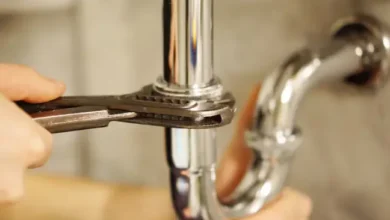P Trap Plumbing: What It Is and Why Your Sink Needs One
If you’ve ever looked beneath the kitchen sink or in the bathroom there’s an unusually curly-shaped pipe. This tiny bend in the pipe has more significance than what it appears. It’s called P trap. P trap and plays major roles in keeping your home tidy and secure.
If you’re interested in what happens to your plumbing or if you’re struggling with an unclean drain, knowing the basics of what is a P trap actually is (and how it works) could make the process much more straightforward. Let’s look at it into simple terms.
What Is a P Trap?
The P trap is a curving section of pipe that is found beneath the sinks, showers and bathtubs. It’s referred to as a “P trap” because if you look at it from the side, and then added the vertical pipe above it would take on the form of a”P” letter “P.”
This pipe bend does more than just look nice. It serves two crucial functions.
-
Water traps to block sewer odors and
-
Take small pieces of garbage that fall accidentally into the water.
How Does a P Trap Work?
If you wash your dishes it is a case of water flowing through the drain before passing across the P trap. The pipe’s curvature holds just a little water, just enough to create an envelop.
The seal creates a barrier between your house and the bad odors from your septic or sewer system. If it isn’t there, those odors can resurface right up your drain into your kitchen or bathroom. Yuck!
It’s as simple as this:
Imagine your drain as a hallway and you have sewer gas as an unwelcome guest seeking to walk through your home. The P trap functions like an unlocked door that is filled with water. It blocks out the intruder and makes your home smell fresh.
Why Is It Called a “Trap”?
“Trap” or “trap” part of the title comes from the secondary function: trapping things.
If you’ve ever tossed rings or earring into the water, the chances that it wasn’t too much. The P trap captures many tiny items before they are swept away within the pipes. It’s the reason plumbers usually eliminate the trap while searching for lost items.
It also collects dirt and gunk such as the soap and hair scum as well as food debris, which is the reason it’s usually the first spot to determine to see if the drain is blocked.
Common P Trap Problems (And Simple Fixes)
As with any other part in your home, traps are prone to some issues. These are the most frequent traps and the best way to take care of:
1. Slow Drains or Clogged Drains. Over time, build-up of particles can pile within the trap. If your drain is running very slowly, then the trap could be the reason.
Fix: Try using a drain snake, plunger or simply remove the trap cautiously and scrub it.
2. Odors of the drain If you smell a sewer smell, then the water inside the trap could be evaporating. It is common in bathtubs or sinks which aren’t being used frequently.
Fix: Run water for just a couple of seconds to replenish the trap. This should eliminate the smell.
3. P traps that leak are generally attached to threaded fittings as well as slip joints. As time passes, they may be damaged or broken.
Fix: Check for leaks and then tighten the connections, or change broken or worn components.
Different Types of P Traps
The basic design is identical however, there are some variants of P traps.
-
Plastic Traps Habitual in the homes, inexpensive and simple to set up.
-
Metal P traps They are usually made from brass or chrome, they’re stronger and more robust, they are employed in places that can be seen (like underneath the sinks of pedestals).
-
S-Traps, and Traps for Bottles and Traps: Variations used for certain plumbing systems however, they are not permitted in modern building codes.
If you’re undertaking DIY repairs or installation it, ensure you pick the proper type that will fit the sink you have and is in line with the local plumbing codes.
Fun Fact: Why P Traps Are Required by Law
P traps don’t only seem like an excellent concept, they’re required by construction regulations in a majority of places. This is because they’re essential to the health of people and safety. In the absence of them, sewer gas can enter buildings and homes that could be not just unpleasant, but risky.
If you’re renovating your bath or in the process of installing a fresh sink, you shouldn’t overlook the trap. The trap is small but is able to do an impressive task.
Final Thoughts
Plumbing may seem like an unsolved issue, but when you grasp the basic concepts–for instance, the purpose of a P trap, it becomes clearer. The pipe’s simple curve ensures your home is smelling clean and protects your health and safeguards valuables in the event of disasters occur.
When you next look into the cabinet beneath your sink, have an ogling at the U-shaped pipe, and make sure to give it a small nod in thanks. It’s doing important work each and every day.
Also Read: Dryer Vent Cleaning: A Simple Guide to Keeping Your Home Safe and Efficient
For more exciting content, be sure to follow ACTION TIME USA
